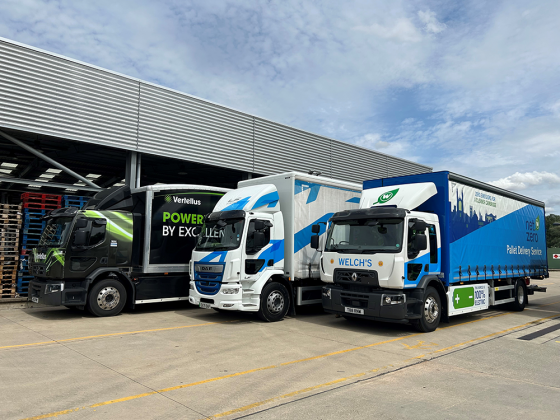Connected cars could bring fair weather for the Cloud
Are connected cars having an influence on the adoption of Cloud technology? Graham Jarvis from TU Automotive investigates.
 According to IBM there will be 250 million connected vehicles on the market by 2020 and they will be connected and fully packaged with sensor technologies. The technology giant also thinks that the connected car will become the top connected application in five years’ time. IBM adds that each of these vehicles will product 350 MB of data a second and, by 2016, a third of consumer data will be stored in the Cloud, while in-vehicle software will be updated over the air through Cloud connectivity.
According to IBM there will be 250 million connected vehicles on the market by 2020 and they will be connected and fully packaged with sensor technologies. The technology giant also thinks that the connected car will become the top connected application in five years’ time. IBM adds that each of these vehicles will product 350 MB of data a second and, by 2016, a third of consumer data will be stored in the Cloud, while in-vehicle software will be updated over the air through Cloud connectivity.
In spite of these finds, which are published on an IBM blog post entitled How the Internet of Things is Transforming the Automotive Industry, Gavin Kenny, associate partner of UK and Ireland at IBM, believes that connected cars aren’t driving Cloud adoption. Yet, in his view, they are facilitating it: ‘The point being that the technologies to allow cars to communicate have been around for a while now, and the Big Data revolution has reached a tipping point to allow data to be produced en masse’.
He adds that the data volumes that the connected vehicles will produce are beyond most automotive manufacturers’ capability. That’s simply because Cloud technology isn’t their core business. The Cloud, nevertheless will allow them to expand their businesses as connected vehicle uptake increases. However, Claes Herlitz, head of automotive at Ericsson, argues that connected cars are driving Cloud adoption because it’s a ‘scale game and as more cars get connected the data processing and connected services need to be provided via the Cloud’.
Cloud is key
Mark Thomas, director of connected cars at Jasper, and Scott Frank, vice-president of marketing at Airbiquity, agree with Herlitz. Frank argues that the Cloud has to be the central point for the delivery of connected devices. The Cloud enables connected car service providers such as Jasper and Airbiquity to run and manage their Cloud‑based platforms and services, aggregate data and conduct analytics to make content and service delivery, explains Frank, more timely and relevant to individual users.
Thomas adds that there are two forces working in concert to push Cloud adoption: “You have the eCall regulations that the European Union is taking the lead on, which allows cars to call for help when they detect there has been an accident.”
He explains that eCall technologies will act as a springboard to other cloud connected services. The second catalyst is embedded connectivity which is driven by customers wanting their cars screen to mirror their smartphones screens. Yet from the manufacturers’ perspective it’s easier for car manufacturers to use smartphones as connections to consumer services than to build their own internet connectivity in order to include their own set of connected services.
Private Cloud needed
Herlitz says: “Connected services for infotainment, safety and autonomous driving can be provided by Cloud infrastructure and a Cloud service enablement platform. The growing number of services and cars requiring them will drive the development of a global Cloud infrastructure which will need to be a private Cloud infrastructure to protect data in such a way that it makes sense to the automotive manufacturers and the national regulator decision makers”.
This may, therefore, mean that it won’t be permissible to send data from China to the US, for example, and so regulation is one of the challenges that is making it harder to set up a global open public Cloud infrastructure.
Another driver for Cloud adoption in this market is being created by the widening range of sensors that connected vehicles are becoming dependent on. Some of them at least will rely on Big Data analysis to inform the driver and the vehicle of vehicle-related and driving factors. Driverless cars will particularly be dependent on Big Data analytics and this analysis has to occur in the Cloud.
Herlitz claims: “I think you’re on to a topic that will be very important, particularly in active safety and in autonomous driving because it is about using Big Data, real-time analytics to understand traffic patterns, for example – and so machine learning and artificial intelligence will be vital.”
Machine learning
Frank explains: “Machine learning and artificial intelligence is definitely coming up fast on the horizon with the evolution moving from infotainment to vehicle-centric applications and services that will enable the car to proactively provide choices and options for drivers to act upon.” He says this kind of service delivery will be highly automated to operate at scale – potentially involving millions of vehicles simultaneously while processing ‘massive amounts of data with sophisticated algorithms in order to be smart’.
He adds: “Autonomous vehicles can’t happen without vehicle connectivity to the Cloud because that’s the only way the vehicles can get smart enough to safely and accurately drive themselves relative to the conditions going on around them.”
He forecasts there autonomous vehicles will become more widespread by 2035. This is when he thinks they will be able to safely, securely, efficiently rely upon networked urban grids to get around without the need of a steering wheel or of a brake pedal.
Bright future
In the meantime, Frank also predicts that the number of cars with connected vehicle technology and with enabled Cloud-based service delivery adoption by the percentage of 2020 production vehicles could be as high as 75 per cent.
He concludes that this figure represents an ‘astounding market adoption growth, considering that the 2015 base is just 13 per cent’. So it could be argued that connected cars are driving Cloud adoption and that the technology could be taking driving to a new road of its existence. For now though the technology is embryonic.
This article was used with kind permission from TU Automotive (analysis.tu-auto.com)
Further Information
analysis.tu-auto.com






